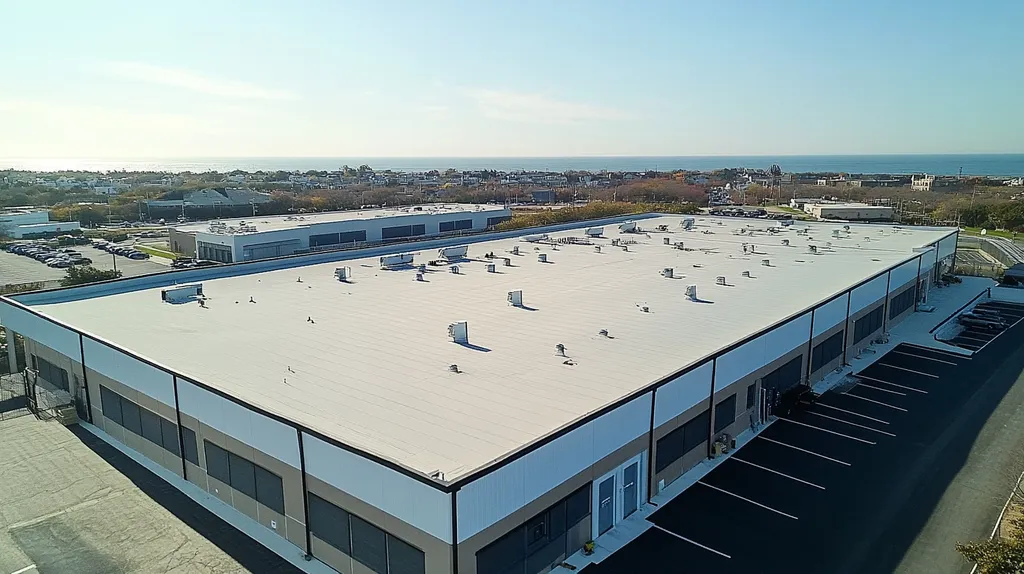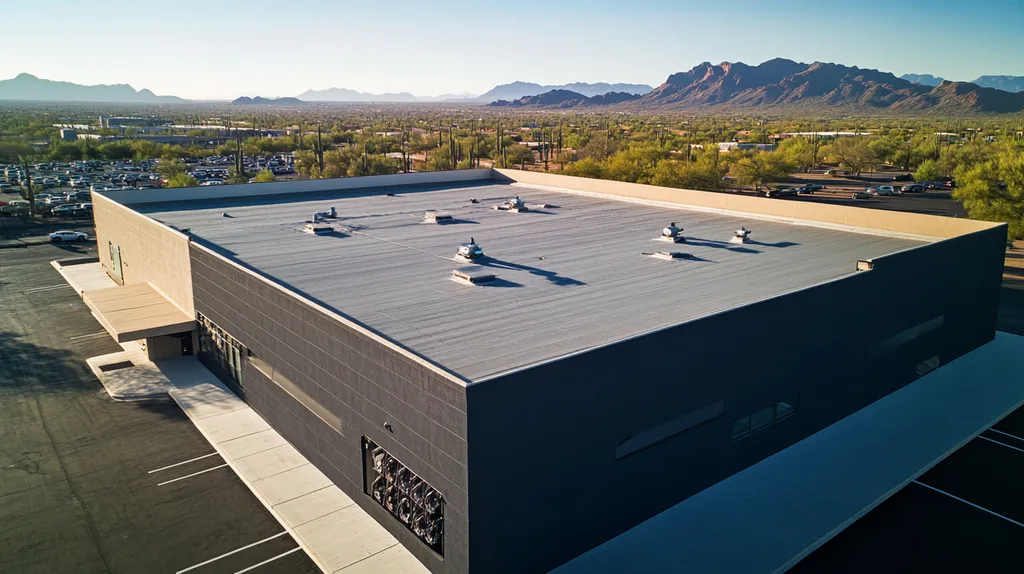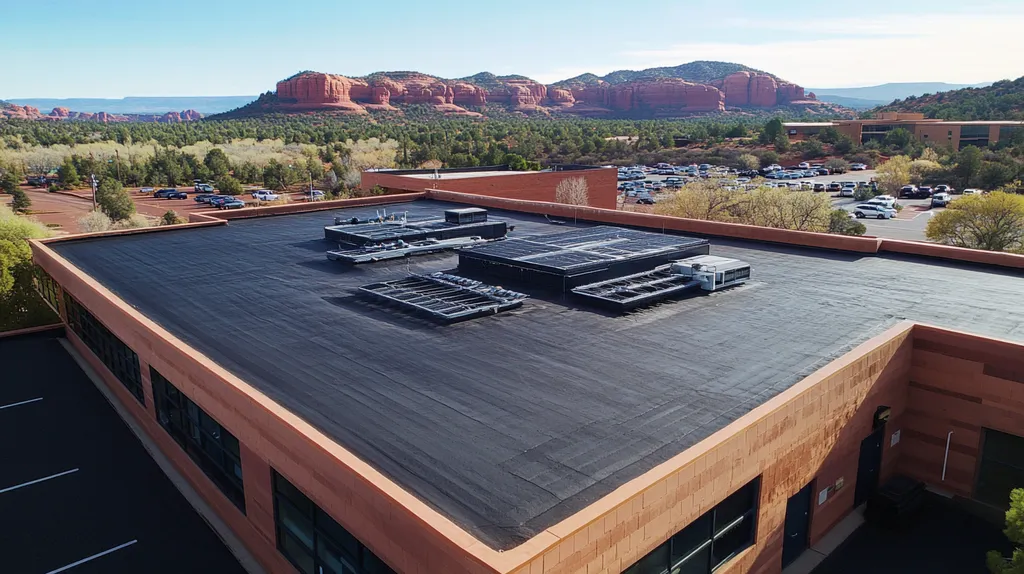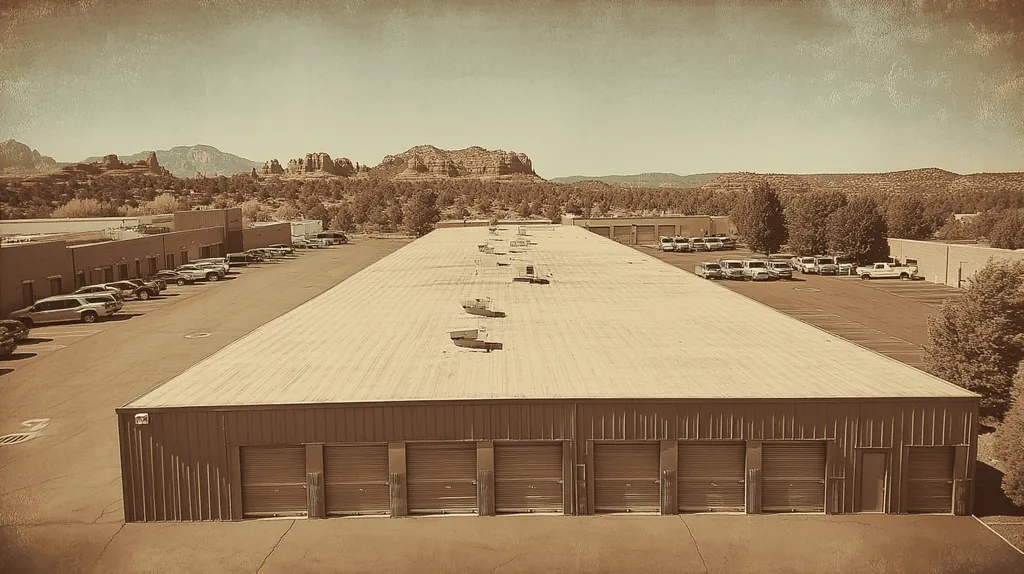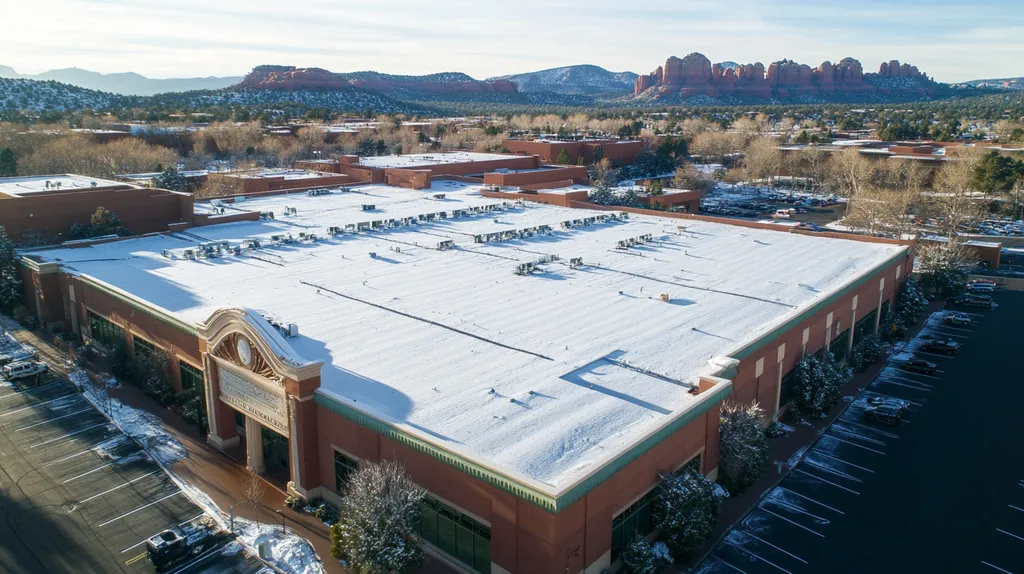Commercial property owners lose millions annually due to outdated ventilation materials that fail to protect their roofing investments. Industry data shows that 35% of roof systems fail prematurely due to inadequate ventilation components.
From galvanized steel vents that corrode within years to plastic components that warp under UV exposure, traditional material choices are falling short of modern performance demands.
This critical analysis challenges conventional wisdom about roofing ventilation materials, revealing how established practices may be undermining building efficiency, durability, and value.
SECTION 1: CURRENT PRACTICES
When it comes to commercial roofing, ventilation isn’t just a nice-to-have; it’s essential. A poorly ventilated roof can lead to costly repairs and even energy inefficiencies, shortening the lifespan of materials by as much as 30%. By understanding the current practices in roof ventilation, property owners and facility managers can avoid unnecessary headaches and make informed decisions that save both time and money.
Common Ventilation Systems Used
Most commercial properties stick to traditional ventilation systems like static vents, exhaust fans, and ridge vents. While they may do the job, many fall short in providing adequate airflow, especially in larger buildings where heat and moisture can stagnate, inviting mold like it’s a VIP guest.
On top of that, relying on passive ventilation—those systems that just sit back and hope for a breeze—can be a gamble. Sure, they’re cost-effective, but they tend to flounder during inclement weather, which means fluctuating indoor air quality and rolling energy bills.
Advanced options like powered roof ventilators promise more airflow control, but let’s be real: the installation and operational costs can make property owners cringe. Finding the sweet spot between efficiency and budget often feels like searching for a needle in a haystack.
Choosing the right ventilation system is about more than just checking a box. Property managers need to weigh their unique needs against the inherent limitations of common systems for optimal building performance.
Standard Ventilation Calculation Methods
Ventilation calculations often stick to outdated guidelines like ASHRAE standards. These methods typically take building size and occupancy into account but overlook the roof’s actual characteristics. This can lead to overblown or, conversely, insufficient calculations.
Many calculations are based on antiquated assumptions about building materials and environmental conditions. For instance, old assumptions about air ingress and egress severely underestimate the airflow challenges in modern settings, leading many roofs to fall into a ventilation black hole.
It’s time for property owners and facility managers to flip the script on these standard calculations. By opting for a custom approach using real-time data, they can better gauge their roofing system’s specific ventilation requirements.
This shift not only updates old practices but creates environments that enhance both efficiency and the longevity of commercial roofs.
Typical Materials and Their Limitations
Many commercial roof ventilation components rely on tired materials like galvanized steel and plastic, which come with their own set of shortcomings. While galvanized steel boasts durability and fire resistance, it’s not immune to corrosion, especially in harsh weather. Plastic options can sag under UV exposure, leading to premature failure.
These traditional materials also leave a lot to be desired in terms of energy efficiency. Poorly insulated vents can cause heat to escape in winter and trap it in summer, spiking energy costs like an overzealous stock market. Suddenly, the cost-effectiveness of these materials is open to debate.
Emerging alternatives, like composite materials and advanced polymers, show promise for enhanced durability and performance but haven’t yet hit the mainstream. This leaves many properties relying on subpar options.
Evaluating these materials critically is essential. Property owners need to gauge the current limitations against the potential long-term gains from investing in better ventilation solutions.
SECTION 2: SYSTEMIC ISSUES
When it comes to commercial roofing, ventilation issues aren’t just a minor annoyance—they can wreak havoc on the entire system. Inadequate airflow not only invites moisture buildup but can also lead to severe deterioration of roofing materials, significantly affecting structural integrity. According to the National Roofing Contractors Association, neglected ventilation can cut a roof’s lifespan by a staggering 50%. It’s critical to confront issues of airflow limitations, energy inefficiencies, and durability head-on to safeguard investments in commercial properties.
Inadequate Airflow and Moisture Buildup
A lack of proper airflow is a persistent problem in the world of commercial roofs, resulting in moisture gathering like an unwanted party guest. Stagnant air sets the stage for condensation, creating a welcoming habitat for mold and mildew. This not only spoils the quality of indoor air but accelerates the decay of roofing materials.
This moisture menace further complicates the insulation’s job. Wet insulation transforms from a protective layer into a sponge, losing its ability to resist heat transfer. The result? Skyrocketing energy bills and occupants sweltering in discomfort.
Unfortunately, many traditional ventilation materials are more focused on saving a buck than on delivering optimal airflow. The upfront savings often come at the expense of long-term performance. To truly tackle these challenges, property owners need more effective materials and designs.
Investing in superior ventilation components can mitigate these airflow and moisture issues, leading to lower maintenance needs and higher roof longevity.
Energy Efficiency and Cost Implications
Energy efficiency stands tall as a paramount concern for savvy commercial property owners. Inadequate ventilation wreaks havoc on heating and cooling costs, with buildings struggling to shed excess heat. This inefficiency can result in energy bills that look more like a Las Vegas jackpot than a routine expense.
The U.S. Department of Energy points out that subpar ventilation can diminish energy efficiency, causing some buildings to lose as much as 30% of their heating and cooling effectiveness. That’s an eye-watering statistic, making it crystal clear that finding cost-effective ventilation solutions is no longer optional.
The good news is that energy-efficient roofing materials are out there, aligning high performance with eco-friendly practices. By choosing the right components, property owners can effectively cut energy loss, saving dollars while also benefiting the planet.
While investing in high-quality ventilation components might sting at first, the potential long-term savings in energy bills and enhanced building performance paint a compelling picture for making the switch.
Maintenance and Durability Concerns
Maintenance is a key player in the commercial roofing game. Inefficient ventilation can trap property owners in a snowball effect of costly repairs and premature replacements. Traditional ventilation materials often fall apart faster than a house of cards, leading to constant repair demands that drain budgets.
On the flip side, effective ventilation enhances durability while simplifying ongoing maintenance. High-quality materials are designed to stand the test of time and resist harsh environmental conditions far better than their traditional counterparts.
Ignoring these systemic issues doesn’t just invite inconvenience; it can bite into budgets in a big way over time. By prioritizing durable ventilation systems, facility managers can cut down on repair frequencies while boosting overall roof performance.
Opting for top-notch materials promotes a proactive maintenance strategy, ensuring commercial properties remain sturdy and operationally efficient for the long haul.
SECTION 3: MISSED OPPORTUNITIES
The choice of materials for commercial roof ventilation components isn’t merely a box-checking exercise—it’s a critical decision with significant financial ramifications. A roof that breathes well can thwart moisture accumulation and dramatically prolong the life of the roofing system. Unfortunately, many property owners overlook pivotal factors, such as climate-specific ventilation needs and the influence of roofing materials, leading to inefficiencies and skyrocketing maintenance costs.
Overlooking Climate-Specific Ventilation Needs
One-size-fits-all approaches rarely work, especially in the realm of commercial roofing. Facility managers who neglect the climate specifics run the risk of costly failures, particularly in areas plagued by extreme weather. For instance, roofs in muggy regions demand ventilation systems designed to manage moisture effectively.
Inadequate ventilation can spell disaster, inviting mold growth and structural damage that burden property owners with exorbitant repair bills. Tailoring ventilation strategies to local climates isn’t just smart; it’s essential for ensuring long-term performance and integrity.
Appropriate solutions could include ridge vents for milder climates or exhaust fans in areas hit hard by snow. By pinpointing local environmental challenges, property owners can make informed decisions that boost both efficiency and durability.
Ultimately, ignoring climate considerations can jeopardize a building’s structural integrity, leading to financial losses and missed opportunities for improved building performance.
Ignoring the Impact of Roofing Materials
The selection of roofing materials can profoundly affect the functionality of ventilation components. Yet, many property owners prioritize cost over compatibility, often neglecting how chosen materials can interplay with their ventilation strategies. Poor material choices can stifle airflow and increase heat retention.
For example, overly thick insulation can block airflow, rendering installed ventilation systems less effective. This obstruction may create hot spots, contributing to inflated energy costs and accelerating the roofing system’s deterioration.
In contrast, utilizing lighter materials can enhance airflow, improve ventilation, and reduce energy consumption. It’s crucial for property owners to assess not only the roofing materials but also their compatibility with the entire ventilation system.
This careful alignment can significantly boost functionality and cost-efficiency, turning a routine roofing decision into a smart investment for the future.
Neglecting Aesthetic and Architectural Integration
While performance is essential, aesthetic considerations shouldn’t take a backseat in building design. Many property owners concentrate solely on metrics, resulting in ventilation components that clash with the building’s architectural style. Such poor choices can harm both the visual appeal and the overall property value.
Inappropriate color schemes or clumsily designed vents can detract from a building’s aesthetic charm, making it less appealing to potential tenants or buyers. Conversely, well-integrated ventilation solutions not only complement the architecture but can also enhance marketability.
Collaborating with design professionals to ensure that ventilation solutions harmonize with the building’s style fosters a cohesive appearance. This attention to detail can fulfill both practical needs and improve property value.
In summary, neglecting aesthetic integration represents a missed opportunity to amplify both the functionality and attractiveness of commercial buildings, impacting longevity and market perception.
SECTION 4: ROOT CAUSES
Many commercial buildings face ventilation setbacks that can spiral into hefty problems like mold, energy waste, and structural decay. The U.S. Department of Energy finds that improper ventilation can boost energy costs by up to 20%. Below, we unpack three fundamental root causes that perpetuate the cycle of using inadequate materials for ventilation components. Addressing these root issues is vital for improving building performance and extending the lifespan of roofs.
Lack of Customized Ventilation Solutions
In the realm of commercial roofing, a cookie-cutter approach to ventilation often reigns supreme. Many projects default to generic solutions that fail to meet the specific airflow needs of different structures. A high-ceiling warehouse, for instance, demands a vastly different ventilation strategy compared to a flat-roof office building.
The use of subpar materials amplifies the problem, resulting in reduced efficiency and accelerated wear over time. Low-quality intake vents can choke airflow, creating hot spots and driving up energy costs. Customized ventilation components, tailored to the unique requirements of each building, are essential for optimal performance.
Employing smart modeling techniques allows for a deeper understanding of a building’s specific layout. This level of personalization ensures that ventilation systems are not only installed but engineered for maximum effectiveness. As the industry embraces innovative materials tailored to specific applications, longevity and performance can markedly improve.
Ultimately, property owners who prioritize customized ventilation solutions are likely to witness a return in energy savings and structural integrity. Tailored systems mitigate common airflow pitfalls, promoting better climate control and comfort.
Insufficient Consideration of Building Layout
The architecture of a commercial building can profoundly affect its ventilation strategy. However, many property owners neglect a thorough analysis of how their building’s layout influences airflow. A poorly designed space can create dead air zones, resulting in uncomfortable temperatures.
Obstructions and anomalies in design—such as skylights or ductwork—can hinder effective airflow if not factored into the ventilation plan. These unaddressed architectural challenges can compromise not only comfort but also energy efficiency, leading to costly consequences.
Designing a successful ventilation system requires an acute understanding of air movement dynamics in relation to specific architectural features. Placing vents strategically can dramatically improve airflow efficiency, but many existing systems fall short in capitalizing on layout advantages.
Inadequate Regulatory Compliance
Regulatory standards surrounding ventilation in commercial buildings often go overlooked, resulting in significant gaps in system performance. Next to cost, adherence to local, state, and federal codes should be a top priority for property owners.
Many landowners may not be fully informed about current building codes that define ventilation requirements. Ignoring these guidelines opens the door to penalties and legal repercussions.
Additionally, poor ventilation practices can diminish indoor air quality, escalating health risks for occupants. A recent study highlighted that subpar air quality can lead to respiratory issues, necessitating greater attention to compliance problems.
As regulations evolve, keeping pace is essential for property managers. Using compliant materials not only aligns with legal standards but also enhances overall system performance and occupant well-being. Training staff on ventilation codes is beneficial in maintaining high standards.
Emphasizing regulatory compliance and utilizing approved materials contribute to better indoor environments and help avert potential legal issues. The resulting improvements in air quality and energy efficiency justify these investments, proving that compliance is not just a checkbox, but a smart business decision.
DATA DRIVEN EVIDENCE
The stakes for property owners regarding roof ventilation are alarmingly high. Did you know that a shocking 35% of commercial roofing systems buckle under pressure and fail prematurely due to subpar ventilation choices? It’s time to wake up to the numbers. This section dives into the critical issues, showcasing statistical insights into ventilation failures, enlightening case studies that reveal the benefits of upgrades, and hard data on energy savings. Understanding these elements is crucial for making informed decisions that enhance building longevity while cutting operating costs.
Statistical Analysis of Ventilation Failures
Research flips the script on roof reliability: over 50% of roof systems are plagued by ventilation issues. Poor airflow leads to moisture buildup, setting the stage for mold and eventual structural failure. According to the National Roofing Contractors Association, issues linked to improper venting are among the top three contributors to roof failures.
A study from the Roof Coatings Manufacturers Association reveals that optimizing ventilation can extend a roof’s lifespan by as much as 20%. This isn’t just a fluff statistic; it highlights the urgent need for property owners to scrutinize their ventilation materials.
Moreover, properties grappling with ventilation-related problems report up to 30% higher maintenance expenditures. These eye-opening figures serve as a wake-up call for property owners to reassess their materials and strategies.
An emphasis on proactive ventilation improvements can significantly reduce risks. Investing in advanced materials and systems not only prolongs a roof’s life but shields owners from the financial fallout of future repairs.
Case Studies on Improved Ventilation Outcomes
Take the case of a warehouse that overhauled its ventilation system, opting for high-efficiency turbine vents. The results? A remarkable 15% boost in energy efficiency along with improved air quality and temperature consistency. Clearly, modern solutions pack a punch.
Then there’s the manufacturing plant that faced rampant moisture issues due to outdated components. By upgrading to state-of-the-art ridge vents, they experienced a notable drop in condensation-related problems. Improved worker comfort and equipment reliability followed suit.
These case studies make it clear: choosing superior materials for ventilation systems not only reduces risks but also ramps up operational efficiency. High-performing components translate into long-term gains and savings.
With proven results serving as evidence, it’s time for property owners and managers to consider the potential for transformative change in their ventilation strategies.
Energy Savings and Cost Reduction Data
Efficient roof ventilation isn’t just about keeping things dry; it’s a game changer for energy savings. Statistics underscore that proper ventilation can slash cooling costs by up to 20% for commercial buildings. That’s a significant incentive for property owners to invest in robust ventilation solutions.
The U.S. Department of Energy supports this claim, stating that facilities with effective ventilation reap average annual energy savings of $1,200 for every 10,000 square feet. This underscores how strategic material choices can yield lasting financial rewards.
Additionally, switching to innovative materials like reflective membranes enhances energy efficiency while minimizing peak usage demands. These advancements boost both ventilation efficacy and energy savings.
By factoring in energy savings and cost reduction metrics, property owners can make savvy decisions that align with their budget and sustainability objectives. Investing in the right ventilation materials isn’t just a smart choice—it’s a strategic move toward greater financial viability.
SECTION 6: ALTERNATIVE SOLUTIONS
The urgency for effective roof ventilation has never been clearer. As climate change escalates and energy efficiency becomes non-negotiable, property owners must pivot towards innovative alternatives. Traditional ventilation materials often fall short, risking structural integrity and unnecessary costs. Enter advanced mechanical systems, innovative static designs, and integrated solutions that promise to transform how commercial rooftops manage air quality and temperature. These alternatives not only enhance building performance but also significantly reduce long-term maintenance costs.
Advanced Mechanical Ventilation Systems
Advanced mechanical ventilation systems are the superhero of roof ventilation, actively regulating airflow and significantly enhancing indoor climate control. Equipped with sensors, these systems automatically adjust to fluctuations in temperature and humidity, ensuring optimal conditions are maintained year-round.
By efficiently expelling excess moisture and heat, these systems reduce the risk of mold growth and damage to building materials. This not only extends the life of the roof but also contributes to overall building health. Customizable to fit various architectural designs, advanced mechanical systems can be tailored to meet diverse commercial property needs.
Energy recovery ventilators (ERVs) are a game changer, reusing energy from stale air to minimize costs while maximizing ventilation. Although the upfront investment might raise eyebrows, the long-term savings on utility bills make a compelling case for this upgrade.
Embracing smart technology takes efficiency a step further by allowing facility managers to monitor system performance remotely. Real-time data empowers managers to schedule maintenance proactively, reducing downtime and keeping operations smooth.
Innovative Static and Ridge Vent Designs
Static and ridge vent designs are stepping up their game with innovative materials and features that challenge the status quo. High-density polyethylene, for instance, offers both durability and UV resistance, significantly extending the lifespan of these essential components. This means less spending on replacements and repairs down the road.
Newly crafted designs improve airflow efficiency. Unique baffle systems efficiently harness wind power, optimizing natural ventilation even when conditions are less than ideal. This capability allows for better temperature regulation without the constant reliance on mechanical systems.
Hybrid systems combining static vents with turbines provide a double whammy of benefits. The turbines create a vacuum effect, pulling in fresh air and promoting continuous airflow. This approach drastically enhances indoor air quality, which is critical for occupant comfort and productivity.
With a focus on sustainability, manufacturers are now using recyclable materials in their production, aligning with environmental stewardship trends. This means property owners don’t have to choose between functionality and responsibility; they can have both.
Integrated Ventilation and Insulation Solutions
Integrating ventilation and insulation can revolutionize roof performance. Traditional methods often isolate these systems, which leads to inefficiencies that cost time and money. A combined strategy addresses heat loss and moisture accumulation effectively, creating a balanced environment.
Modern materials like radiant barriers offer dual benefits by providing insulation while promoting airflow. This synergy can help maintain comfortable indoor temperatures and reduce sky-high reliance on HVAC systems, ultimately lowering energy costs.
Additionally, a thoughtful integration reduces the number of roof deck penetrations, thus minimizing potential leak points. This is especially crucial in commercial roofing, where even small leaks can lead to significant damage and costly repairs.
As building codes increasingly encourage the adoption of integrated designs, property owners adopting these innovative strategies not only stand out in terms of sustainability but also enhance operational efficiency in a competitive market.
The Bottom Line
With 35% of commercial roofs failing prematurely due to ventilation issues, the industry can no longer afford to ignore material innovation.
Traditional galvanized steel and plastic components are proving woefully inadequate against modern performance demands, costing property owners millions in repairs and energy waste.
Advanced mechanical systems, innovative static designs, and integrated solutions offer compelling alternatives that can extend roof life by up to 20% while reducing energy costs by as much as 30%.
The data is clear: commercial properties that invest in superior ventilation materials and designs not only protect their structural assets but also gain significant competitive advantages through reduced operational costs and improved building performance.
The future of commercial roof ventilation lies not in maintaining outdated practices, but in embracing materials and systems that deliver measurable, long-term value.
FREQUENTLY ASKED QUESTIONS
Q. What are common materials for commercial roof ventilation?
A. Many commercial roofs rely on traditional materials like galvanized steel and plastic for ventilation. While these materials boast durability, they often face corrosion or sagging under UV exposure. Property owners might find themselves footing higher energy bills as these materials fail to insulate adequately.
Q. How do ventilation problems affect commercial roofs?
A. Insufficient ventilation leads to moisture buildup, which invites mold and structural decay. Over time, compromised roofs can see their lifespans cut drastically, resulting in costly repairs. It’s like inviting termites to a feast: bad news for your budget.
Q. Why should I consider climate when choosing roof ventilation?
A. Climate considerations are crucial because different environments present unique airflow challenges. Ignoring local climate can lead to inadequate moisture management, mold growth, and expensive repairs. Tailored solutions are needed to enhance performance and extend roof life.
Q. Are traditional ventilation methods cost-effective for commercial roofs?
A. While traditional methods may seem budget-friendly upfront, they fall short on long-term efficiency. The hidden costs, like increased energy bills and frequent repairs, can add up quickly. A penny saved today could cost you a dollar tomorrow.
Q. How can I improve energy efficiency through ventilation choices?
A. Choosing high-performance ventilation materials and systems can significantly enhance energy efficiency. Options like energy recovery ventilators help minimize energy waste. Investing in superior components pays off, reducing utility bills and making your wallet a much happier place.
Q. What should I look for in modern ventilation solutions?
A. Look for features like energy-efficient designs, durability, and smart technology integration. Advanced mechanical systems that adjust to changing conditions provide superior performance. Prioritizing these features can bring longevity and higher functionality to commercial roofs.
Q. How can I assess the quality of my commercial roof ventilation?
A. Regular inspections for moisture issues, airflow checkups, and insulation assessments are key. Monitoring your energy bills can also indicate problems. If your roof ventilation feels like a mystery novel, it’s time to investigate further and consider upgrades.

